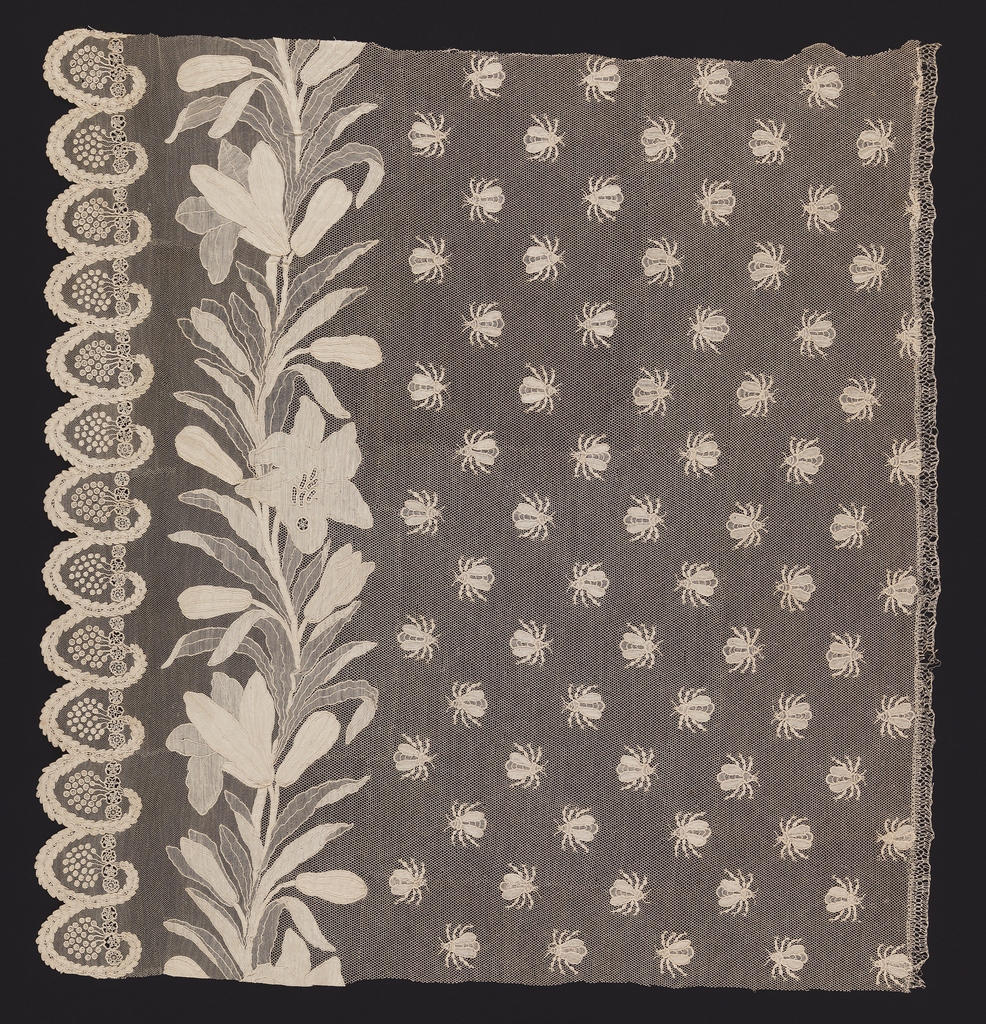This valance fragment is just a small piece from a set of bed furnishings commissioned by Napoleon I (1769-1821) for his wife Joséphine (1763-1814). Intended for their home in Malmaison, located outside Paris, the commission consisted of a ceiling canopy, pair of curtains, bed cover and valance. Made of fine point d’Alençon lace by the manufacturer Clérambault, the ground has the characteristic hexagonal mesh made of looped and twisted threads. The mesh surrounding the rows of bees has reinforcing threads that wrap around parts of it to provide additional strength. Raised surface threads were used to outline the design while dense buttonhole stitches fill the leaves, flowers and wings of the bees.
In commissioning these bed furnishings, Napoleon showed his support of French lace makers, whose business declined dramatically during and after the French Revolution. Unfortunately, by the time the bed set was completed, Napoleon had divorced Joséphine and was remarried already to Marie Louise of Austria (1791-1847). The complete bedcover, at the RISD Museum, has patches where Joséphine’s monograms were removed; a modification made by the manufacturer to compel Napoleon to pay for the set after his remarriage. The design has an elegant pairing of motifs relevant to the couple. Lilies for Joséphine who was passionate about flowers – the South African lily, Brunsvigia josephinae, is named after her; and Napoleon’s adopted symbol of the bee, long associated with the origins of France.
Kimberly Randall is the Collections Manager of the Textile Department at Cooper Hewitt, Smithsonian Design Museum.
